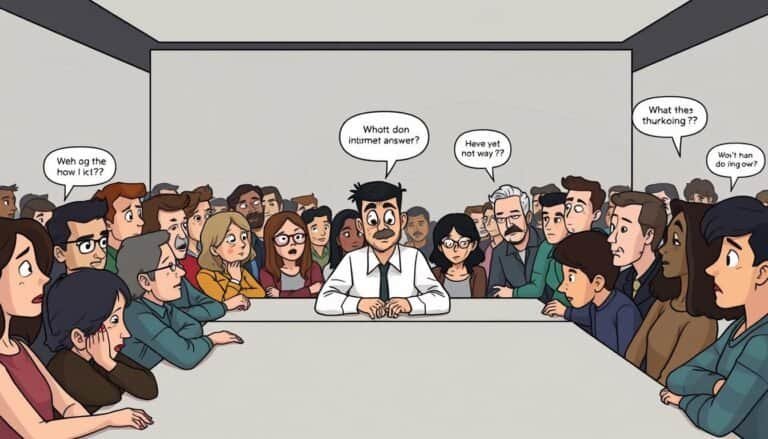5 Personality Clues That Someone Is Lying
When spotting lies, watch for inconsistent body language like mixed facial expressions and gestures not matching words. These hints can uncover true feelings and motives. Avoiding eye contact and shifting gazes suggest discomfort and deceit. Struggling with details indicates short-term memory issues, leading to storytelling slip-ups. Changes in speech, such as hesitations or sudden pace alterations, signal internal conflict or cover-ups. Nervous behaviors like fidgeting and shaky voices reveal underlying tension. By noting these cues, you can gain insight into potential lies and hidden truths. Further insights await on uncovering deceptive behavior.
Key Takeaways
- Inconsistent body language: Contradicting facial expressions and gestures reveal true emotions.
- Avoiding eye contact: Signals dishonesty and discomfort, deflecting attention to evade detection.
- Trouble maintaining details: Struggle with specific details, leading to storytelling inconsistencies.
- Sudden changes in speech patterns: Vocal hesitations, rapid speech, and pauses indicate internal conflict.
- Uncharacteristic nervousness: Physical signs of anxiety like fidgeting, hesitations, shaky voice, and sweaty palms.
Inconsistent Body Language
When detecting lies, one key indicator to look out for is inconsistent body language. This inconsistency can manifest in various ways, such as contradicting facial expressions and gestures that don't align with the verbal message being conveyed. By incorporating microexpressions analysis and verbal cues detection, one can further enhance their ability to spot discrepancies between what's being said and how it's being expressed non-verbally.
Microexpressions analysis involves observing fleeting facial expressions that occur involuntarily and often reveal true emotions. These brief expressions can provide valuable insights into a person's genuine feelings, which may differ from the words they're using to deceive.
Additionally, paying attention to verbal cues, such as hesitations, changes in tone, or vague language, can help uncover inconsistencies between the spoken words and the underlying truth.
Avoiding Eye Contact
In instances where someone is being deceptive, avoiding eye contact can serve as a notable non-verbal cue that may indicate dishonesty. When a person shifts their gaze away during a conversation, it can suggest discomfort or an attempt to avoid revealing the truth. This avoidance of eye contact is often linked to feelings of guilt or anxiety about being caught in a lie.
Additionally, individuals who are being deceitful may actively avoid questions by looking away or downplaying the significance of certain inquiries. This behavior can be a way to deflect attention and prevent further probing into their dishonesty. By avoiding direct eye contact and skirting around specific questions, the individual may hope to evade detection and maintain the façade of honesty.
Trouble Maintaining Details
Individuals who struggle to maintain specific details may inadvertently reveal signs of deception through inconsistencies in their narrative. This difficulty in retaining information could stem from issues with short-term memory.
When someone is lying, their brain is often working overtime to fabricate a story, leading to slip-ups in recalling the details they previously mentioned. These lapses can manifest as storytelling inconsistencies, where the sequence of events or key facts may not align from one retelling to another.
In cases where a person isn't being truthful, their struggle to keep track of the details can become evident as they try to navigate through their fabricated account. These inconsistencies may arise due to the cognitive load of maintaining a false narrative, causing discrepancies that observant individuals can pick up on. By paying attention to these deviations in the story, one can potentially uncover signs of deceit when interacting with others.
Sudden Changes in Speech Patterns
Sudden shifts in speech patterns can often serve as key indicators of potential deception during interpersonal interactions. When someone is lying, their speech may exhibit noticeable changes that can provide valuable insights into their truthfulness.
Here are some common speech pattern deviations to watch out for:
- Vocal hesitations, tone shifts: Liars may experience hesitations in their speech or sudden shifts in tone as they struggle to fabricate a story. These variations can indicate internal conflict or discomfort with the falsehoods being presented.
- Rapid speech, frequent pauses: In an attempt to deceive, individuals might speak rapidly to avoid giving away inconsistencies or truths. Conversely, they may also insert frequent pauses to buy time and construct their lies more convincingly.
Uncharacteristic Nervousness
Exhibiting uncharacteristic nervousness can be a telltale sign of potential deception in interpersonal interactions. When someone is lying, they may display physical signs of anxiety that are typically not present in their normal demeanor. One common behavior is fidgeting excessively, which can manifest in actions like tapping fingers or bouncing legs. This nervous energy stems from the internal conflict between fabricating a story and maintaining composure.
Moreover, noticeable hesitations in speech can also indicate deceit. Unusual pauses or stutters may occur as the individual struggles to concoct falsehoods on the spot. A shaky voice is another giveaway, as vocal tremors often betray underlying tension. Additionally, sweaty palms are a physiological response to stress and can be a visible indicator of the unease felt when being untruthful.
Conclusion
To sum up, when trying to determine if someone is lying, pay close attention to their body language, eye contact, ability to maintain details, speech patterns, and level of nervousness. These clues can provide valuable insights into a person's honesty.
Remember, actions speak louder than words, so trust your instincts and observe carefully. As the saying goes, 'the eyes are the window to the soul,' and they can reveal more than words ever could.








